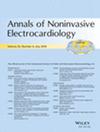Evaluating the Prognostic Significance of Cystatin C Level Variations Pre- and Post-Radiofrequency Catheter Ablation in the Recurrence of Persistent Atrial Fibrillation
Abstract
Objective
To investigate the correlation between persistent atrial fibrillation (AF) recurrence and alterations in cystatin C levels pre- and post-radiofrequency catheter ablation (RFCA).
Methods
This study encompassed 114 patients diagnosed with persistent AF. Their serum cystatin C levels were assessed both prior to and 3 months after undergoing an RFCA procedure. The variance in cystatin C levels before and after RFCA is represented as ΔCystatin C. Subsequently, we compared these values between two groups: patients who did not experience a recurrence of AF (n = 79) and those who did experience a recurrence (n = 35).
Results
A significant reduction in cystatin C levels post-RFCA in both groups, with a more pronounced decrease observed in the non-recurrence group. Moreover, the recurrence group exhibited larger left atrial diameter and volume before RFCA compared to the non-recurrence group. Cox regression analysis indicated that smaller reductions in serum cystatin C levels and greater left atrial volumes before RFCA were associated with an increased risk of recurrence, after adjusting for covariates. The receiver operating characteristic curve indicated an elevated probability of clinical recurrence of AF post-RFCA in patients with a cystatin C decline < 0.08 mg/L (AUC 0.64). The Kaplan–Meier survival analysis revealed that patients with a cystatin C decline > 0.08 mg/L exhibited significantly higher rates of remaining free from recurrence following RFCA across a 24-month follow-up period (Log-rank test p = 0.003).
Conclusions
Alterations in ΔCystatin C levels pre and post-RFCA in the initial phase could independently predict the recurrence of AF.


 求助内容:
求助内容: 应助结果提醒方式:
应助结果提醒方式:


